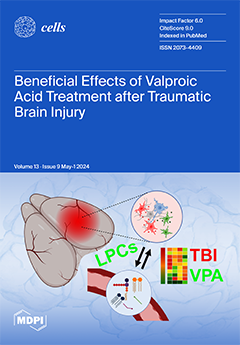Bisindole alkaloids are a source of inspiration for the design and discovery of new-generation anticancer agents. In this study, we investigated the cytotoxic and antiproliferative activities of three spirobisindole alkaloids from the traditional anticancer Philippine medicinal plant
Voacanga globosa, along with their mechanisms of action. Thus, the alkaloids globospiramine (
1), deoxyvobtusine (
2), and vobtusine lactone (
3) showed in vitro cytotoxicity and antiproliferative activities against the tested cell lines (L929, KB3.1, A431, MCF-7, A549, PC-3, and SKOV-3) using MTT and CellTiter-Blue assays. Globospiramine (
1) was also screened against a panel of breast cancer cell lines using the sulforhodamine B (SRB) assay and showed moderate cytotoxicity. It also promoted the activation of apoptotic effector caspases 3 and 7 using Caspase–Glo 3/7 and CellEvent-3/7 apoptosis assays. Increased expressions of cleaved caspase 3 and PARP in A549 cells treated with
1 were also observed. Apoptotic activity was also confirmed when globospiramine (
1) failed to promote the rapid loss of membrane integrity according to the HeLa cell membrane permeability assay. Network pharmacology analysis, molecular docking, and molecular dynamics simulations identified MAPK14 (p38α), a pharmacological target leading to cancer cell apoptosis, as a putative target. Low toxicity risks and favorable drug-likeness were also predicted for
1. Overall, our study demonstrated the anticancer potentials and apoptotic mechanisms of globospiramine (
1), validating the traditional medicinal use of
Voacanga globosa.
Full article






